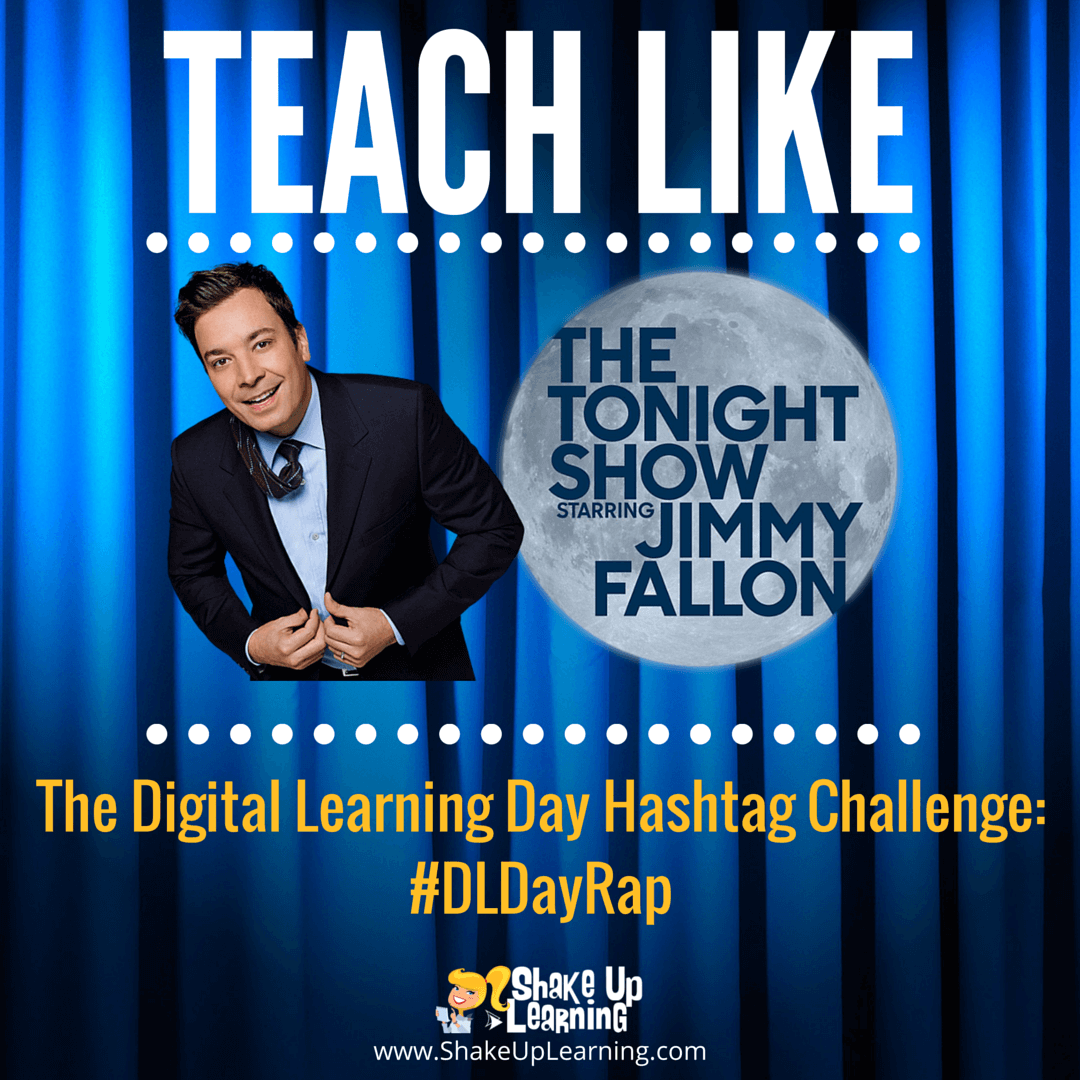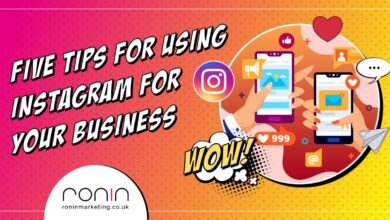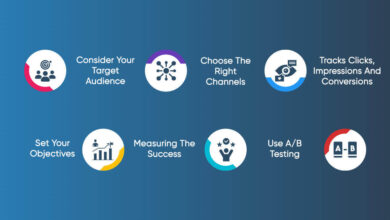
When Hashtags Go Wrong Or Right
When hashtags go wrong or right, it’s a make-or-break moment for your online presence. This post dives deep into the world of hashtag strategy, exploring how the right hashtags can skyrocket your reach, while the wrong ones can bury your content. We’ll cover everything from choosing relevant s to avoiding legal pitfalls and measuring your success. Get ready to level up your hashtag game!
From crafting the perfect hashtag campaign for a fictional product to analyzing the impact of hashtag overload on user experience, we’ll dissect real-world examples of both triumph and disaster. We’ll explore how brand consistency, ethical considerations, and data-driven decision-making all play crucial roles in creating a winning hashtag strategy. Whether you’re a seasoned social media pro or just starting out, this guide will equip you with the knowledge to make your hashtags work for you.
Hashtag Relevance and Targeting
Effective hashtag usage is crucial for any successful social media marketing campaign. Choosing the right hashtags allows your content to reach the intended audience, increasing visibility and engagement. Conversely, using irrelevant or poorly targeted hashtags can lead to wasted effort and a diluted brand message. This section explores the nuances of hashtag relevance and targeting, providing examples and strategies for optimal results.
A well-planned hashtag strategy is the backbone of a successful social media marketing campaign. It’s not simply about using as many hashtags as possible; it’s about strategically selecting those that resonate with your target audience and align with your marketing goals. This involves understanding the difference between broad and niche hashtags and the potential consequences of misusing them.
A Hypothetical Marketing Campaign: “GlowUp Gummies”
Let’s imagine a new vitamin gummy brand called “GlowUp Gummies,” targeting young adults (18-25) interested in health, wellness, and beauty. Our marketing campaign will focus on Instagram and TikTok. We’ll leverage a multi-pronged hashtag strategy combining broad and niche approaches. For broader reach, we might use hashtags like #vitamins, #healthylifestyle, and #wellnessjourney. To target our specific demographic and interests, we’ll incorporate niche hashtags like #skincare, #glowingskin, #selfcare, #beautyhacks, and potentially even some trending hashtags related to beauty and wellness influencers.
We’d also track the performance of each hashtag to optimize our strategy over time, analyzing engagement metrics to identify which hashtags are most effective. This data-driven approach ensures that our marketing budget is used efficiently and that our message reaches the right people.
Broad vs. Niche Hashtags: Effectiveness Comparison
Broad hashtags, such as #health or #beauty, have a massive reach but also high competition. This means your post might get lost in the flood of content. While they can increase overall visibility, they’re less effective in targeting a specific audience. Niche hashtags, like #veganbeauty or #collagenboost, have a smaller reach but higher engagement rates because they attract a more focused audience genuinely interested in your product’s niche.
For “GlowUp Gummies,” a balanced approach is key. Broad hashtags help increase initial visibility, while niche hashtags ensure the right audience sees and interacts with the content. The ultimate goal is to find the optimal balance between reach and relevance.
Consequences of Irrelevant or Overly Broad Hashtags
Using irrelevant hashtags dilutes your brand message and wastes marketing resources. It can also damage your brand’s credibility if the hashtags are completely unrelated to your product or target audience. Overly broad hashtags, while offering high reach, suffer from low engagement rates due to high competition. Your post becomes a needle in a haystack, lost amidst millions of other posts.
This can lead to decreased visibility and a poor return on investment for your marketing efforts. For example, using #sportscars for a gummy vitamin campaign would be utterly irrelevant and confusing to potential customers.
Examples of Successful and Unsuccessful Hashtag Targeting
Successful hashtag targeting: #plantbaseddiet (targets health-conscious individuals), #sustainablefashion (targets environmentally conscious consumers), #momlife (targets mothers). These hashtags are specific enough to attract a relevant audience while remaining relatively popular, offering a good balance between reach and engagement.Unsuccessful hashtag targeting: #everything (too broad and meaningless), #randomstuff (unclear and irrelevant), #xyz123 (arbitrary and lacks context). These hashtags fail to attract a specific audience and are ineffective in promoting a product or service.
They simply don’t connect with the target market and don’t offer any valuable information to search engines or users. The lack of specificity renders them almost useless for marketing purposes.
Brand Consistency and Voice: When Hashtags Go Wrong Or Right
Maintaining a consistent brand voice and hashtag strategy is crucial for building a strong online presence. Inconsistency can confuse your audience, dilute your message, and ultimately harm your brand’s reputation. A well-defined strategy ensures your hashtags reinforce your brand identity across all platforms, creating a cohesive and memorable experience for your followers.A consistent hashtag strategy strengthens brand recognition and recall.
When users encounter your branded hashtags across different social media channels, they begin to associate those hashtags with your brand, making it easier to find your content and engage with your brand message. This consistent association builds brand loyalty and helps you establish a unique identity in a crowded digital landscape.
Brand Hashtag Style Guide
A comprehensive style guide is essential for maintaining consistency. This guide should Artikel which hashtags to use, how to use them (e.g., always include a brand-specific hashtag with every post), and the overall tone and style associated with your hashtag usage. For example, a playful brand might use humorous hashtags, while a luxury brand might opt for sophisticated and elegant ones.
The guide should also address the frequency of hashtag usage, avoiding oversaturation, and the platforms where specific hashtags will be used. Consider including examples of both appropriate and inappropriate hashtag usage to provide clarity and guidance to your team.
Impact of Inconsistent Hashtag Usage
Inconsistent hashtag usage can lead to a fragmented brand image. If your hashtags vary wildly in style, tone, and relevance across platforms, it creates confusion for your audience and makes it difficult for them to understand your brand’s core values and messaging. This lack of cohesion can damage your credibility and make it harder to build a loyal following.
Furthermore, inconsistent use can make your content harder to find through hashtag searches, limiting your reach and hindering your ability to connect with potential customers. A scattered approach can easily make your brand appear unprofessional and disorganized.
Examples of Successful Hashtag Strategies
Many brands successfully leverage consistent hashtag strategies. For example, #Starbucks always appears with posts related to their products or experiences. The hashtag maintains a consistent visual and textual association with the brand’s imagery and tone, ensuring a cohesive brand experience. Similarly, Dove’s campaigns often include hashtags that align with their core message of self-esteem and body positivity, reinforcing their brand values.
These brands maintain a clear style guide and ensure all social media teams are trained to follow it. This consistency strengthens their brand identity and improves audience engagement. They also strategically utilize relevant trending hashtags, but only when those trends align with their brand’s established voice and image.
Pitfalls of Using Trending Hashtags
While using trending hashtags can boost visibility, it’s crucial to ensure they align with your brand’s voice and identity. Using a trending hashtag that is unrelated or even contradictory to your brand’s message can be detrimental. For example, a luxury car brand using a hashtag associated with budget travel would create a jarring disconnect and potentially damage its perceived image.
Similarly, a brand known for its ethical sourcing practices should avoid trending hashtags that promote unsustainable consumption. Carefully evaluating the context and overall sentiment associated with any trending hashtag before using it is crucial for preserving brand integrity.
Hashtag Overload and User Experience
Let’s face it, we’ve all seen those posts – walls of text crammed with dozens, sometimes hundreds, of hashtags. While the intention might be to maximize reach, the reality is often quite different. Hashtag overload significantly impacts the user experience, potentially harming your brand more than helping it. This section will delve into the consequences of hashtag stuffing and how to strike the right balance for optimal results.
The impact of excessive hashtags is multifaceted, affecting readability, engagement, and overall brand perception. A cluttered post is less visually appealing and harder to read, discouraging users from interacting with it. This is in stark contrast to a post with a carefully selected few, relevant hashtags that enhance the user experience.
User Experience Comparison: Few vs. Excessive Hashtags
The following table illustrates the stark differences in user experience between posts employing a few relevant hashtags versus those overloaded with irrelevant ones.
| Feature | Post with Few Relevant Hashtags | Post with Excessive Hashtags |
|---|---|---|
| Readability | Easy to read and understand; the hashtags blend seamlessly into the post. | Difficult to read; the hashtags dominate the post, making it visually unappealing and hard to decipher the actual content. |
| Engagement | Higher likelihood of likes, comments, and shares due to the clear and concise presentation. | Lower engagement due to poor readability and a perception of spamminess. Users are less likely to interact with a post that feels cluttered and overwhelming. |
| Overall Impact | Positive; creates a professional and engaging impression. Increases brand credibility and strengthens user connection. | Negative; creates a spammy and unprofessional impression. Damages brand reputation and reduces user trust. May even lead to shadowbanning by the platform. |
Negative Impact of Hashtag Stuffing
Hashtag stuffing, the practice of using an excessive number of hashtags, regardless of relevance, severely undermines user engagement and negatively impacts brand perception. Users perceive hashtag stuffing as spammy and unprofessional. This leads to decreased interaction, lower reach, and potential damage to your brand’s reputation. Platforms like Instagram and Twitter actively work to combat spam, and excessive hashtag use can result in your posts being penalized or even shadowbanned, meaning fewer people will see them.
Curating a Balanced Hashtag Selection
To maximize reach without overwhelming users, carefully curate a balanced selection of hashtags. This involves a strategic mix of:
- Brand Hashtags: Unique hashtags representing your brand or a specific campaign. These build brand awareness and create a community around your content.
- Community Hashtags: Popular hashtags relevant to your industry or niche. These increase visibility and reach a wider audience interested in your content.
- Trending Hashtags: Hashtags that are currently popular and relevant to your post. Using these strategically can significantly boost visibility, but ensure they’re genuinely relevant to avoid appearing out of place.
The ideal number of hashtags varies across platforms and content types, but generally, keeping it under 10-15 is a good rule of thumb for most platforms. Experimentation and analysis of your post performance is key to finding the optimal number for your specific audience and content.
Regularly Reviewing and Updating Hashtag Strategies
Your hashtag strategy shouldn’t be a set-it-and-forget-it approach. Regularly review and update your strategy based on performance data. Analyze which hashtags are driving the most engagement, and adjust your selection accordingly. Monitor trends and identify new, relevant hashtags to incorporate into your strategy. This iterative process ensures your hashtag strategy remains effective and aligned with evolving audience preferences and platform algorithms.
Legal and Ethical Considerations
Hashtags, while seemingly simple, can lead to significant legal and ethical pitfalls if not used carefully. Understanding the potential consequences is crucial for maintaining a positive brand image and avoiding costly legal battles. This section explores the legal and ethical dimensions of hashtag usage, offering guidance for responsible and compliant practices.
The seemingly innocuous hashtag can quickly become a legal minefield. Using copyrighted material or trademarks without permission is a clear violation of intellectual property rights. Similarly, promoting harmful products or services through hashtags raises serious ethical concerns and can lead to reputational damage and even legal action.
Legal Issues Related to Copyright and Trademark Infringement
Using copyrighted images, music, or text in your hashtags, even indirectly through association with a campaign, can result in legal action from the copyright holder. Similarly, using a trademark in a hashtag without authorization constitutes trademark infringement, potentially leading to cease-and-desist letters and lawsuits. Companies should always obtain permission before using any protected intellectual property in their hashtag campaigns.
Failure to do so could result in significant financial penalties and damage to brand reputation. A clear example would be a small business using a well-known brand’s logo within a hashtag to promote a sale – this is clearly infringing on the brand’s trademark and could lead to legal repercussions.
Ethical Implications of Promoting Harmful Products or Services
Promoting products or services that are harmful, dangerous, or misleading through hashtags is ethically questionable and can have severe consequences. This includes promoting products that are illegal, unsafe, or that exploit vulnerable populations. For example, using hashtags to promote counterfeit goods, dangerous weight-loss supplements, or unregulated financial schemes is not only unethical but also potentially illegal. Such actions can damage the brand’s reputation irreparably and erode public trust.
The ethical considerations extend to the responsibility a company has to ensure its marketing does not contribute to societal harm.
Guidelines for Responsible and Ethical Hashtag Usage, When hashtags go wrong or right
To ensure responsible and ethical hashtag usage, consider the following guidelines:
- Always obtain permission before using copyrighted material or trademarks in your hashtags.
- Thoroughly research any product or service you promote through hashtags to ensure it is safe, legal, and ethically sound.
- Avoid using hashtags that are sexually suggestive, discriminatory, or otherwise offensive.
- Be transparent about any sponsored content or partnerships related to your hashtag campaigns.
- Monitor your hashtag campaigns closely for any negative feedback or misuse.
- Develop a clear social media policy that addresses the ethical and legal use of hashtags.
Examples of Hashtag Campaigns Facing Legal or Ethical Challenges
Several hashtag campaigns have faced legal or ethical challenges, highlighting the importance of careful planning and execution. Analyzing these cases provides valuable lessons for future campaigns.
- Example 1: A hypothetical case involving a clothing brand using a popular song in a promotional video, including the song title in their hashtag, without securing the necessary licensing rights. This could lead to a copyright infringement lawsuit from the music copyright holder.
- Example 2: A company using a hashtag to promote a weight-loss product making unsubstantiated claims about its effectiveness. This raises ethical concerns regarding misleading advertising and potential health risks. Regulatory bodies could investigate and impose fines.
Measuring Hashtag Performance
So, you’ve carefully crafted your hashtag strategy, implemented it across your social media platforms, and now the crucial question arises: how well did it actually perform? Simply using hashtags isn’t enough; you need a robust system to track, analyze, and learn from your hashtag performance. This allows you to refine future campaigns and maximize your return on investment.
This post Artikels a framework for effectively measuring your hashtag success.Tracking and analyzing hashtag performance requires a multi-faceted approach. It’s not just about looking at the raw numbers; it’s about understanding the context and drawing actionable insights. This involves combining data from various sources and using appropriate analytical techniques to uncover meaningful patterns and trends.
Key Metrics for Hashtag Effectiveness
Understanding which metrics are truly valuable is essential for effective measurement. Focusing on vanity metrics alone can be misleading. Instead, prioritize metrics that directly relate to your business objectives. These metrics offer a clearer picture of your campaign’s impact.
- Reach: This measures the total number of unique users who saw your content containing a specific hashtag. A higher reach indicates broader exposure of your brand or message.
- Engagement: This encompasses various interactions like likes, comments, shares, and retweets. High engagement suggests your content resonated with your audience, sparking interaction and conversation.
- Conversions: This is a critical metric, especially for marketing campaigns. It measures the number of users who took a desired action, such as visiting your website, making a purchase, or signing up for a newsletter, after encountering your content via a specific hashtag. This directly links your hashtag usage to tangible business results.
- Brand Mentions: Monitoring how often your brand is mentioned in relation to a specific hashtag helps gauge brand awareness and sentiment. This provides valuable feedback on public perception.
- Website Traffic from Hashtags: Tracking website traffic originating from social media platforms using specific hashtags helps you understand the effectiveness of your hashtag strategy in driving traffic to your online properties.
Analyzing Hashtag Performance Data
Raw data is just the beginning. The real value lies in interpreting the data to inform future strategies. This involves comparing performance across different hashtags, platforms, and time periods.Effective analysis involves identifying trends and patterns in the data. For instance, you might discover that certain hashtags consistently outperform others, revealing which resonate most with your target audience. Similarly, analyzing performance across platforms can reveal which channels are most effective for your hashtag campaigns.
Time-series analysis can show how performance changes over time, allowing you to identify peak periods or declining engagement. This granular level of analysis is key to optimizing future hashtag strategies.
Methods for Analyzing Hashtag Data
Several tools and techniques are available for analyzing hashtag data. Each has its own strengths and weaknesses.
- Native Platform Analytics: Most social media platforms (Twitter, Instagram, Facebook, etc.) offer built-in analytics dashboards. These provide basic metrics like reach and engagement, but their depth of analysis is often limited. Strength: Free and readily accessible. Weakness: Limited functionality and insights.
- Third-Party Social Media Analytics Tools: Tools like Brand24, Talkwalker, and Sprout Social offer more comprehensive analytics, including sentiment analysis, competitor benchmarking, and advanced reporting capabilities. Strength: Deeper insights and more comprehensive reporting. Weakness: Often require a subscription fee.
- Spreadsheet Software (Excel, Google Sheets): For smaller-scale campaigns, you can manually collect and analyze hashtag data using spreadsheet software. This allows for custom calculations and visualizations. Strength: Flexibility and control over analysis. Weakness: Time-consuming and prone to errors for large datasets.
Visual Representation of Hashtag Success/Failure

Source: pinimg.com
Visualizing hashtag performance is crucial for understanding campaign effectiveness. A well-designed infographic can quickly communicate complex data, revealing whether your hashtag strategy is hitting the mark or missing its target. By presenting key metrics visually, you can easily identify areas for improvement and celebrate successes.An infographic illustrating the relationship between hashtag usage and social media engagement could use a combination of charts and icons to effectively convey the data.
For instance, a line graph could track the number of times a hashtag was used over time, correlating it with a second line representing overall engagement (likes, shares, comments, retweets). A clear visual distinction between these lines – perhaps using different colors and line styles – would highlight the relationship between hashtag usage and the resulting engagement. Positive trends would be shown as upward-sloping lines, ideally with annotations indicating specific events or campaigns that contributed to the increase.
Conversely, downward-sloping lines would represent negative trends, potentially indicating a need for hashtag strategy adjustments. Icons could be strategically placed along the timeline to represent key milestones, like the launch of a new product or a significant marketing push. For example, a rocket icon could represent a successful campaign launch, while a downward-pointing arrow could represent a drop in engagement.
Successful Hashtag Campaign Visual Representation
Imagine an image depicting a vibrant, upward-trending graph, symbolizing a successful hashtag campaign. The graph’s line is thick and bright green, ascending sharply. The background features a stylized cityscape with numerous interconnected nodes, each representing a social media user engaging with the hashtag. These nodes glow brightly, indicating high activity and engagement. The hashtag itself is prominently displayed, perhaps integrated into the cityscape’s design or incorporated into a banner at the top of the image.
Positive feedback icons – such as thumbs-up symbols, hearts, and speech bubbles filled with positive comments – are scattered throughout the cityscape, further emphasizing the positive reception of the campaign. The overall aesthetic is energetic and positive, conveying a sense of growth and success. The image’s color palette is dominated by bright, optimistic hues such as green, blue, and yellow.
Unsuccessful Hashtag Campaign Visual Representation
In contrast, an image depicting an unsuccessful campaign might show a flat or downward-trending graph in muted gray or red. The line is thin and faint, barely visible against a dull background. The cityscape in this image is dark and sparsely populated, with only a few dimly lit nodes representing minimal user engagement. The hashtag is displayed faintly, almost hidden within the image.
Negative feedback icons, such as thumbs-down symbols and sad faces, are subtly present, reinforcing the lack of engagement and negative reception. The overall aesthetic is somber and muted, reflecting the lack of success. The color palette would consist of darker, less vibrant colors like gray, brown, and muted reds. The contrast between these two images clearly illustrates the visual differences between successful and unsuccessful hashtag campaigns.
Ending Remarks

Source: twimg.com
Mastering the art of hashtag usage is an ongoing journey, not a destination. By understanding the nuances of hashtag relevance, brand consistency, user experience, and ethical considerations, you can transform your social media strategy. Remember, it’s not just about quantity, it’s about quality, relevance, and a thoughtful approach. Regularly analyze your performance, adapt your strategy, and watch your engagement soar! So, go forth and hashtag wisely!
Questions Often Asked
What are some common hashtag mistakes to avoid?
Using irrelevant hashtags, overusing hashtags, using banned hashtags, and ignoring hashtag analytics are all common pitfalls.
How often should I update my hashtag strategy?
Regularly, at least monthly, tracking performance and adjusting based on what’s working and what’s not. Trends change quickly!
Can I use the same hashtags across all platforms?
Not necessarily. Each platform has its own nuances and audience, so tailor your hashtag selection accordingly.
What’s the best way to find relevant hashtags?
Use hashtag research tools, look at what your competitors are using, and brainstorm s related to your content.






